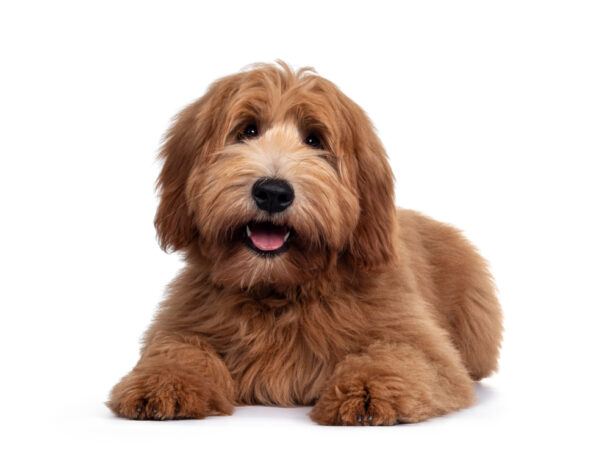LifeWithMyDogs is supported by our audience. When you purchase through one of our links, we may earn a small affiliate commission. As an Amazon Associate I earn from qualifying purchases. Your cost is not affected.
**********
All About Labrador Retrievers: A Comprehensive Guide” is your ultimate resource for everything you need about this beloved dog breed. Discover the rich history, unique characteristics, and versatile abilities of Labrador Retrievers. Whether you’re considering bringing one into your family or already have a Lab companion, this guide provides valuable insights into their temperament, care, training, and health. Dive deep into the world of Labrador Retrievers and gain a deeper appreciation for these friendly, intelligent, and loyal canine companions.
Labrador Retriever Breed
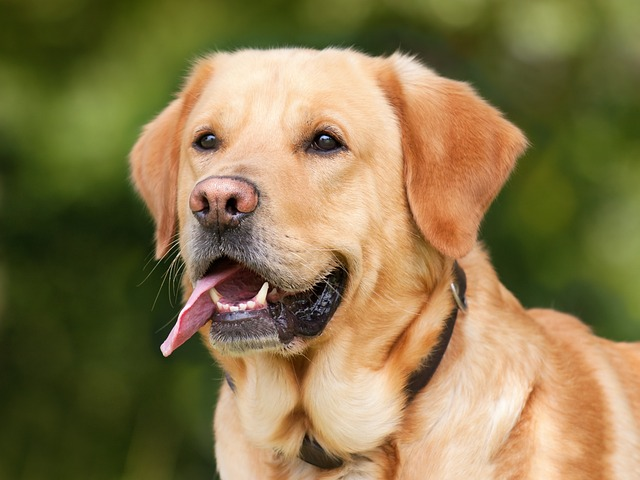
The Labrador Retriever breed was designed to be a fantastic buddy and handy working dog. Back in the day, they used to help out fishermen big time, doing all sorts of tasks like lugging nets, bringing in ropes, and fetching fish from the frigid North Atlantic waters. Labradors are still just as friendly and dynamic as their ancestors. They’ve even snagged the title of America’s most popular dog breed. Nowadays, these Labs are rocking various roles, from fetching stuff for hunters to being excellent assistance dogs. You’ll also spot them strutting at dog shows and heroically doing search and rescue missions. These pups do it all! And they’re not alone in their excellence—other retrievers, like golden retrievers, often join them in the ranks of beloved and hardworking dog breeds.
Facts About Labrador Retriever

Let’s dive into some cool and quirky facts about Labrador Retriever Facts:
- Labrador Retriever’s thick tail is sometimes called an otter tail; those furry friends have a special tail feature that helps them glide through the water like champs.
- Labrador Retrievers exhibit a coat that can be found in three primary colors: chocolate, black, and yellow. Historically, black was the preferred color among early breeders, but over time, yellow and chocolate Labs have gained popularity. In recent times, some breeders have marketed Labrador Retrievers in what they describe as “rare” colors like polar white or fox red. It’s important to note that these colors are not genuinely rare; they are simply variations of the yellow Lab coat.
- Retrieving is in their DNA. These dogs have an inborn knack for fetching stuff.
- Labradors aren’t just your regular pups; they often step into the roles of therapy dogs and service dogs, positively impacting people’s lives.
- If you’ve got treats in hand, you’ve got a Labrador’s full attention! These guys are major foodies, which can make them a breeze to train. Who can blame them? Food is the ultimate motivator.
Did You Know?

Based on the American Kennel Club (AKC), Labradors have an interesting history. They were first bred in England, and their ancestors were these unique water-loving dogs called the St. John’s water dogs. These special dogs originally came from Newfoundland, where they helped fishermen by fetching nets and gear, and they could even dive underwater to retrieve fish that had fallen overboard. Quite the versatile and water-savvy bunch!
Labrador Retriever Personality

The Labrador breed is the life of the party in the dog world! They’ve got these awesome personalities that make them super popular among family members. Check out some of the things that make Labradors stand out:
Friendly
Labs are like social butterflies; they’re about making new buddies, whether humans or furry family pets. Meeting new faces? That’s their jam.
Outgoing
Shy? Not these guys. Labs are all about the action, and they’re up for any adventure that comes their way. Exploring and playing is their idea of a great time for dog owners.
Even-Tempered
These pups are pretty chill. They don’t easily lose their cool or get all aggressive. They’ve got that zen vibe going on, making them great family members.
Intelligent
Labradors aren’t just good looks; they’ve got brains too! They’re quick learners, which makes training a breeze for dog owners. They’re all about making their owners proud.
Loyal
When you’ve got a Lab, you’ve got a ride-or-die friend. They bond super tight with their humans and are always there when you need them, which is why they make wonderful family members.
Playful
Playtime is the best time for Labs. Fetch, tag, you name it – they’re in! They’ve got endless energy for fun and games, delighting dog owners and family members.
Labrador Retriever as a Working Dog

Labrador Retrievers? Oh, they’re more than just your typical pup. These fellas are not just smart but also incredibly loyal and hardworking. They have the whole package, making them a top choice in various fields where a dependable and sharp dog is needed. Check this out:
Guide Dogs
Yep, Labs are often the show’s stars when it comes to service dogs. They’re trained to assist people with disabilities in various ways, from opening doors to fetching stuff.
Therapy Dogs
They’re also big in the therapy dog scene, bringing comfort and smiles to folks in hospitals, nursing homes, and other places where a bit of canine love goes a long way.
Search and Rescue Dog
Labrador Retrievers can be a real lifesaver if you ever find yourself in a tight spot. Their incredible sense of smell and tracking skills make them awesome search and rescue dogs.
Detection
Labs can put their noses to good use detecting drugs, explosives, and other not-so-friendly stuff. They work alongside law enforcement and the military to keep our communities safe.
Gun Dogs
Traditionally, they’re the go-to choice for retrieving waterfowl during hunting season, but they’re also pretty handy in other hunting gigs, like upland bird hunting.
And that’s not all! Labradors can roll up their sleeves and get to work in farming, herding, and even agility tasks. These pups are versatile and can learn a variety of skills.
If you’re considering getting a Labrador Retriever as a working dog, here’s a pro tip: Make sure you pick a breeder specializing in working dogs. They’ll help you choose a puppy with the right temperament and trainability to excel in the field. With the right guidance, your Labrador can become a true working champion!
Labrador Retriever Appearance

Labrador Retrievers are medium-to-large dogs known for their sturdy build and friendly demeanor. They sport a short, dense coat in three classic colors: yellow labs, black labs, or chocolate labs.
Their distinctive features include a broad head, drop ears, and tails reminiscent of playful otters. Standing between 21.5 and 24.5 inches tall at the shoulder and weighing in at 55 to 80 pounds, with males generally larger, Labs strike an imposing figure. Their double-layered coat serves as protection from various weather conditions. The outer coat is short and sturdy, providing resilience, while the inner coat is soft and dense, offering insulation.
While Labradors tend to experience moderate shedding throughout the year, it’s essential to expect a bit more fur shedding during the spring and fall seasons. Their expressive eyes vary in color from amber to brown to black, and their medium-sized ears hang close to their heads. Their tails are notably thick, tapering to a point, completing their distinctive appearance.
Labrador Retrievers are truly strong, stylish, and sweet-natured companions.
Grooming Guide
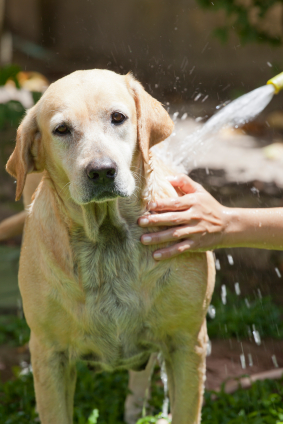
Grooming Labrador Retrievers is generally hassle-free and straightforward. However, you can do a few things to keep their coat healthy and looking its best.
Brushing
Labrador Retrievers possess a dual-layered coat consisting of both a topcoat and an undercoat. The topcoat is short and dense, while the undercoat is soft and woolly. Labrador Retrievers shed heavily twice a year, in the spring and fall. During these times, brushing your Lab daily to remove loose fur and prevent matting is important.
Bathing
Labrador Retrievers must only be bathed as needed, typically once a month or less. When you bathe your Lab, use a mild shampoo specifically designed for dogs. Avoid bathing your Lab too often, as this can dry out their skin and coat.
Nail Trimming
Labrador Retrievers’ nails tend to grow rapidly, underscoring the importance of regular trimming. You have the option to either trim your Lab’s nails at home using dog nail trimmers or seek the assistance of a groomer or veterinarian for this task.
Ear Cleaning
Labrador Retrievers’ ears are prone to wax buildup and infection. It is important to check your Lab’s ears regularly and clean them as needed. Use a gentle ear cleaner designed for dogs to clean your Lab’s ears.
Dental Care
Labrador Retrievers are prone to dental problems, such as tartar buildup and gum disease. Brushing your Lab’s teeth regularly is important to help prevent these problems. You can brush your Lab’s teeth at home with a dog toothbrush and toothpaste, or you can take them to a veterinarian for professional dental cleaning.
Here Are Some Additional Tips for Grooming Your Labrador Retriever:
- Utilize a slicker brush to effectively eliminate loose fur and minimize the risk of matting.
- Use a curry comb to distribute natural oils and improve circulation.
- Trim the hair around your Lab’s paw pads to prevent them from slipping.
- Check your Lab’s ears for wax buildup and infection.
- Brush your Lab’s teeth regularly to prevent dental problems.
Following these grooming tips can help your Labrador Retriever stay healthy and look their best.
Health

Labrador Retrievers are a healthy breed overall, but like all of us, they can have health problems. Here are some common concerns to be mindful of:
Hip Dysplasia
It’s when the hip joint doesn’t develop properly, causing pain and limping, and it might lead to arthritis down the road.
Elbow Dysplasia
Similar to hip dysplasia but with the elbow joint.
Progressive retinal atrophy (PRA)
Eye conditions that may ultimately result in vision loss.
Bloat
It’s a scary deal where the stomach twists and fills up with gas and is life-threatening.
Cancer
Labs have a higher risk for certain types of cancer, like lymphoma and hemangiosarcoma.
Ear Infections
Ear infections are a common problem in dogs, but they are especially common in Labrador Retrievers because of their floppy ears. Floppy ears can trap moisture and bacteria, leading to ear infections. The key is to have your Labrador buddy checked out by a vet regularly to catch any of these issues early when they’re easier to tackle.
Tips to Keep Your Lab in Tip-top Shape:
- Feed them a top-notch diet that suits their age and activity level.
- Watch the portion sizes – overeating can lead to chubbiness and health woes.
- Get them moving with regular exercise, but don’t go too wild, especially when it’s scorching outside.
- Keep their fur tidy with regular grooming to brush away loose hair and spread those skin oils.
- Don’t skip those vet checkups and screenings; they’re a lifesaver.
With the right TLC, Labrador Retrievers can enjoy a long and healthy journey alongside you.
Do I Need To Train My Labrador Retriever?
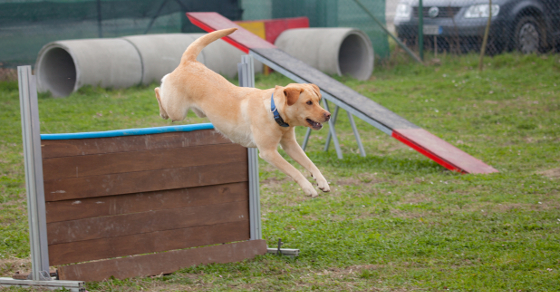
Let’s dive into Labrador Retrievers and training for a bit. You see, these pups are super smart and aim to please, but they can have many dog traits in them. So, they still need guidance to learn their manners and basic commands. But a well-trained Labrador Retriever can be the most fantastic companion! Now, why should you bother with training, you ask? Well, there are some perks to consider:
Good Manners: Training helps your Lab grasp the fine art of sitting, staying, and coming when called – basically, how to be a polite pooch.
Social Skills: It’s all about teaching them to play nice with other breeds and get along with people. They’ve got the energy, so they need to channel it right!
Impulse Control: We’re talking about helping your Lab chill out and not jump on every squirrel that crosses their path. Yep, they’ve got pent-up energy that needs direction.
Physical & Mental Stimulation: This keeps their brains and bodies active, preventing boredom and its mischievous side effects. Labs are like energetic athletes in many ways!
Stronger Bond: Plus, it’s a great way to strengthen your bond with your Lab – team building, you could call it! You and your Lab become a dynamic duo. Now, about the training options – you’ve got choices. You can take the DIY route or enroll in obedience classes. If you’re up for going it alone, there are tons of resources like books, websites, and videos to give you a helping paw.
Training Tips to Keep in Mind:
- Start Early: Starting training as early as possible ensures a smoother training journey. Popular breeds like Labrador Retrievers, in particular, benefit greatly from early lessons.
- Stay Consistent: Always use the same commands and rewards – consistency is key in teaching these intelligent pups.
- Keep it Short & Fun: Labs can have short attention spans, so aim for snappy 15-minute, engaging, entertaining training sessions.
- Patience is a Virtue: Training takes time, and you might encounter a few hiccups. Don’t be discouraged if your Lab doesn’t become a master overnight.
- Positive Vibes: Lastly, use positive reinforcement – treats, praise, or pets – to reward good behavior. Remember, they’re popular breeds for a reason – they love treats!
With patience, consistent effort, and a dash of fun, your Labrador Retriever can become a well-behaved and delightful companion. Happy training!
Activities and Exercise
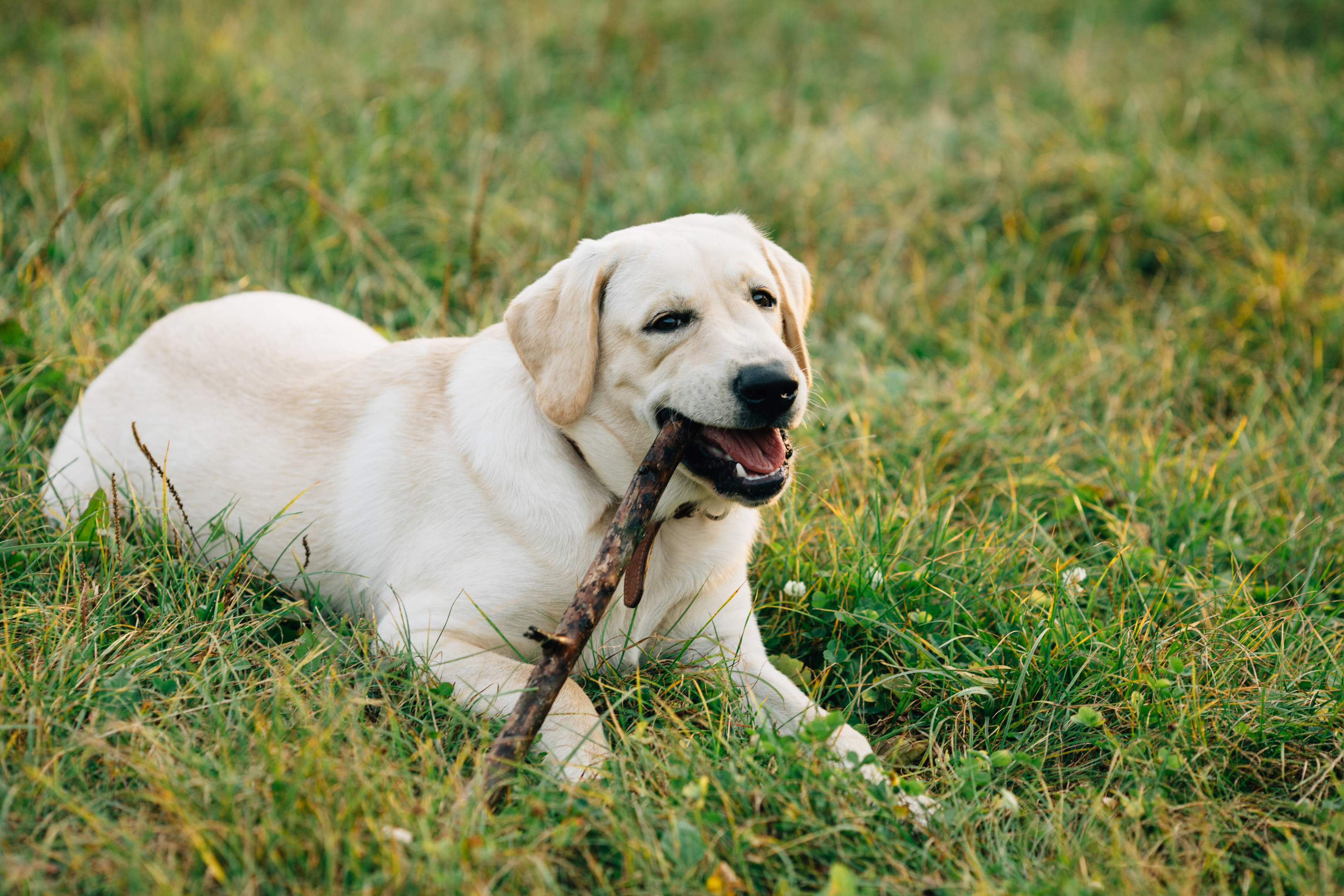
Let’s talk about keeping those active Labrador Retrievers on their toes and in tip-top shape! These guys are known for their boundless energy and need their fair share of exercise. Here are some fun ways to get your Lab moving:
Fetch
It’s a Labrador favorite! Grab a ball or a frisbee and head to the park, beach, or backyard. A great game of fetch gets them running and gives their clever minds a workout, a retrieving game.
Swimming
Labs are water babies. If you’ve got a pool or live near a lake or river, take them for a swim. It’s a fantastic way to cool off on a hot day, burn some energy, and get enough exercise.
Walks and Runs
Whether it’s a leisurely stroll or a brisk run, your Lab will appreciate it. Aim for at least 30 minutes of exercise a day, and you can do this in the park, on the beach, or around your neighborhood. Labradors excel at this!
Hiking
If you’re into hiking, take your Lab along. It’s a double win – you both enjoy the outdoors while your Lab gets a workout, retrieving game. Just pack enough water for both of you.
Dog Parks
Dog parks are a goldmine for social Labradors. They can run around, make new friends, and have a blast, enough exercise. But remember, keep an eye on them, and follow any leash rules.
Tips for Keeping Your Lab Fit and Happy:
- Begin with brief exercise sessions and incrementally extend them as your Labrador becomes more physically fit.
- Avoid exercising in super hot weather. If it’s too hot for you, it’s too hot for your Lab.
- Keep that water bowl filled up – before, during, and after exercise.
- Watch for signs of heat exhaustion like heavy panting, excessive drooling, or vomiting. If you spot any of these, breathe in a cooler spot.
By keeping your Labrador Retriever active and ensuring they get enough exercise, you’re not just helping them stay healthy; you’re making sure they remain the happiest pups around!
If you’re considering owning a Labrador Retriever or a similar retriever breed, or if you don’t know how to identify your retriever’s breed, check out this video about breeds similar to Labrador Retrievers.
All the 6 Retriever Dog Breeds | By: Retriever Care
Labrador Love: More Than Just Pets, They’re Family
In wrapping up our journey through the world of Labrador Retrievers, it’s clear that these four-legged pals are so much more than just dogs – they’re cherished companions who bring unique qualities and incredible versatility to our lives.
From their humble beginnings as hardworking fishing assistants to their current roles as service dogs, therapy dogs, and search and rescue heroes, Labradors have quite the resume. But they’re not just about the job – they’re also all about heart and personality.
We’ve delved into their friendly and intelligent natures, learned how to keep them looking their best, and discussed essential health considerations. We’ve tackled their training requirements and emphasized the pivotal role of exercise in their lives.
Labrador Retrievers are not just pets; they’re bona fide family members. They’re the wagging tails that greet you after a long day, the loyal eyes that never judge, and the furry shoulders to lean on in times of need.
So, whether you’re pondering the idea of bringing a Labrador into your home or you’re already blessed with one as a cherished companion, this guide arms you with the knowledge and insights to ensure the best care and companionship possible.
May your journey with these incredible dogs be filled with endless happiness, unforgettable memories, and a bond that exemplifies the extraordinary connection between humans and their ever-loyal Labrador friends.
FAQs
Do Labradors Bark a Lot?
Labradors are generally not renowned for their excessive barking tendencies. They tend to be moderate in their barking compared to some other breeds. However, it’s essential to understand that individual Labrador Retrievers may vary in their barking tendencies based on their personality, upbringing, and training.
Is It Possible to Leave My Labrador Unattended for 8 Hours?
Leaving a Labrador alone for 8 hours can be challenging, as these dogs are social animals that thrive on human interaction and companionship. While adult dogs can occasionally be alone for this duration, it’s not ideal for their well-being.
Is a Labrador a Good Family Dog?
Yes, Labrador Retrievers are widely regarded as excellent family dogs. They are known for their friendly, outgoing, and affectionate disposition, making them fantastic companions for families of all sizes.
? Embark on an Adventure in the Pet Lover’s Paradise! ?
Dive into a world of furry friends and fantastic finds by connecting with us on social media! Immerse yourself in captivating content, insightful product reviews, and become a part of a vibrant community.
?Instagram: lifewithmydogs2 Follow us on Instagram for an overflow of heartwarming snapshots and exciting pet escapades!
?Pinterest:lifewithmydogs2 Explore a treasure trove of pet inspiration and ideas on Pinterest, where each pin leads you to a realm of creative possibilities!
? Facebook: 1LWMD Like us on Facebook to keep your finger on the pulse of all things pets – from heartwarming stories to the latest pet gear trends!
? Twitter: LifeWithMyDogs9 Join the conversation on Twitter, where you can chirp away about the newest pet happenings and stay ahead of the pack with the latest pet trends!
Unleash your furry friend’s paradise with us – join our pack today! ??


